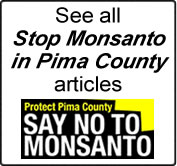Non-GMO vs. Organic:
Do You Know the Difference?
by Melissa Diane Smith
Both are good ways to avoid GMOs yet they have definable distinctions.
The natural foods industry has always been based on the idea of pure unadulterated whole food, so it isn’t surprising that there’s a big movement afoot among natural food shoppers to avoid laboratory-created genetically modified organisms (GMOs) hidden in many foods. Newfangled GMOs are made when genetic engineers insert genes from one living thing (say, a bacteria) into the DNA of a completely unrelated living thing (say, corn) – a process that is anything but “natural.”
Many people who shun GMOs know that the two main ways to avoid them are to buy products labeled organic or to buy products labeled Non-GMO Project Verified. However, some shoppers get confused about the difference between the two. To make the best purchasing decisions for you and your family, it’s important to understand what the two labels really mean. Here’s a rundown.
Non-GMO Project Verified
The Non GMO Project Verified label is the fastest-growing label claim in the natural foods industry. In order to earn this distinction, a product undergoes a rigorous review process by the non-profit organization, the Non-GMO Project, which operates North America’s only third party verification program for GMO avoidance. The verification program includes testing of at-risk ingredients on an ongoing basis. The ingredients that are tested – crops currently in production in genetically engineered form – include alfalfa, canola, corn, cotton, papaya, soy, sugar beets, yellow squash, and zucchini. Animal products, including milk, meat, eggs, and honey, are also tested.
It’s important to remember that this program focuses solely on GMO avoidance. In other words, a product could earn a Non-GMO Project Verified Seal, but still contain ingredients that are grown with commercial herbicides and chemical fertilizers – substances many natural food shoppers prefer to avoid.
USDA Organic
Organic Trade Association surveys show that 22 percent of the respondents now cite avoiding GMOs as a primary reason to eat organic food. That’s because the use of GMOs is prohibited under the United States Department of Agriculture (USDA) National Organic Program. To meet the USDA organic regulations, farmers and processors must show they aren’t using GMOs and also that they are protecting their products from contact with GMOs through a variety of methods such as implementing “buffer zones” next to GMO fields, delaying planting or doing early planting to avoid organic and GMO crops flowering at the same time, and using properly cleaned farm equipment. That’s why the USDA Organic seal on products automatically means non-GMO to most people.
However, organic certification does not require testing for GMOs. Given the widespread use of GMOs, and some GM crops such as corn being notorious for spreading through wind drift and contaminating other fields, some shoppers want the extra insurance of GMO testing and opt for the Non-GMO Project Verified label for that reason.
But there are many more reasons to buy USDA Organic food than just avoiding GMOs. Many consumers want to support this environmentally beneficial food production system that sustains the health of soils, ecosystems, and people. Others want to avoid substances that are excluded from organic farming, including irradiation, sewage sludge, antibiotics, growth hormones, and synthetic chemical fertilizers and pesticides, many of which have been linked to health problems, including neurological and endocrine system disorders, and cancer.
Still another good reason to purchase organic foods is because they’re more nutritious. Reviews of multiple studies show that organic foods provide significantly greater levels of vitamin C, iron, magnesium and phosphorus than non-organic varieties of the same foods. They also tend to provide greater levels of health-supporting antioxidant phytochemicals, such as flavonoids, and a 2013 study found that organically produced milk has a more beneficial fatty acid composition helpful for promoting reduced inflammation in the body.
Making an Educated Choice
Non-GMO Verified products generally cost less than certified organic foods, so if you can’t always afford organic foods but want to avoid GMOs, buy non-GMO, especially for products that contain the main ingredients at risk to contain GMOs.
If you want to avoid GMOs but also think there are too many pesticides and other undesirable practices in conventional agriculture and want to use your purchasing power to buy food that’s produced in ecologically protective ways, buy organic.
But it doesn’t have to be an either-or decision. It can be both. More than half of the Non-GMO Project’s verified products are certified organic. So, if you want the extra protection of both programs for GMO avoidance together, if you want the food that you purchase to have been tested for GMOs, and if you also want to use your dollars to support the many benefits of organic agriculture, seek out both the Non-GMO Project Verified label and USDA Organic label. The two seals together, I tell my clients, are the gold standard at the present time for signifying nutritious unadulterated pure food as nature intended.

[…] Non-GMO Vs. Organic: Do You Know the Difference? […]